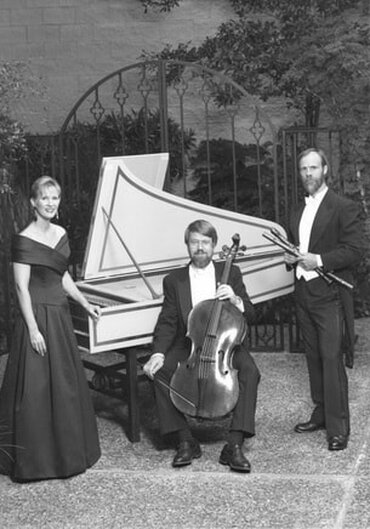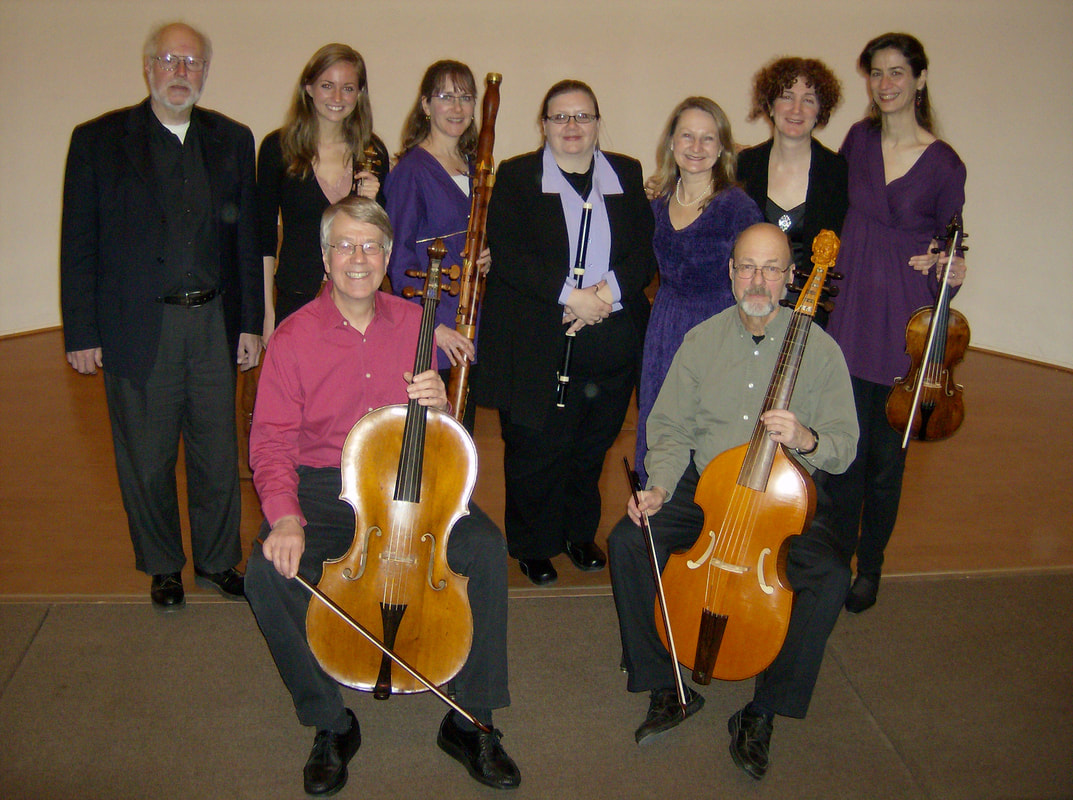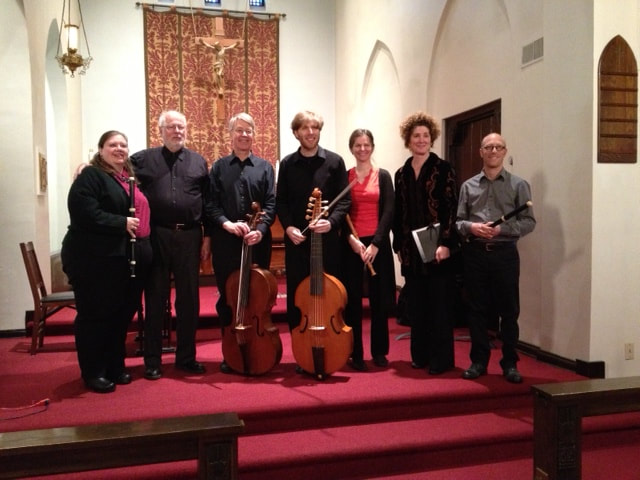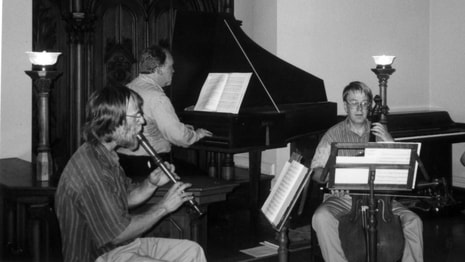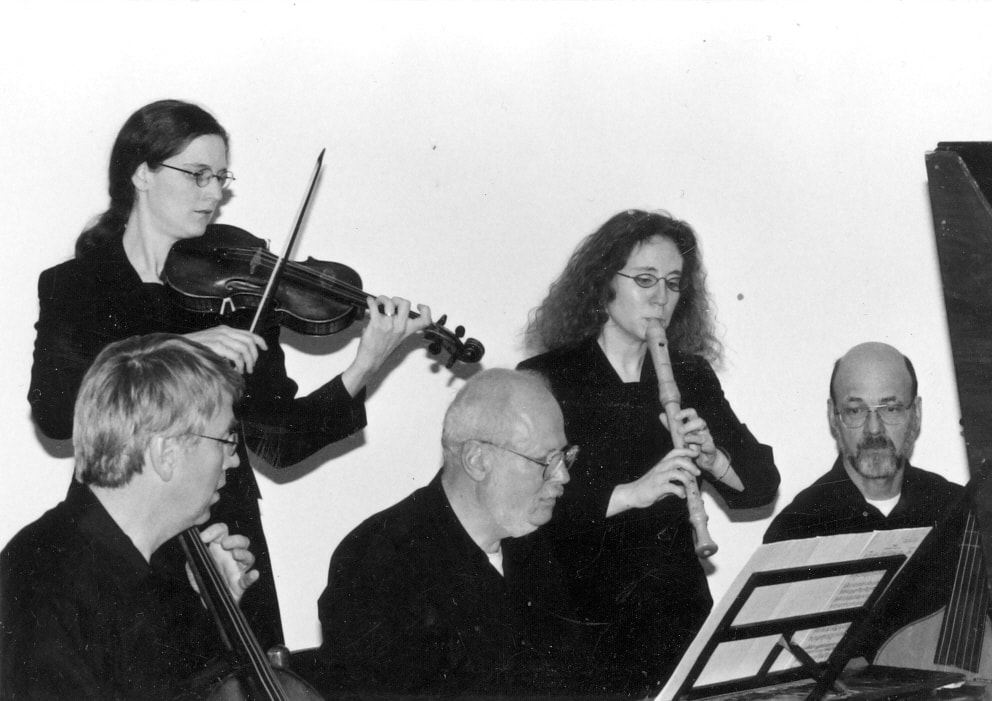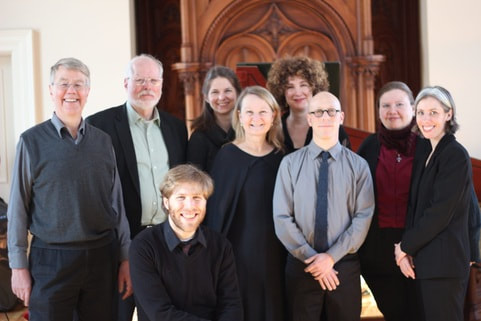Our Mission
We derive great pleasure in bringing chamber music of the 16th, 17th, and 18th centuries to life and strive to communicate our enthusiasm for this music to audiences with sincerity on period instruments in intimate settings.
Since “chamber music” was intended to be played in small chambers rather than large concert halls, we like to play our concerts in intimate settings. The close proximity of the audience, as well as our sharing of bits of interesting musical information before a selection, helps bridge the gap between performer and listener. Another highlight of our Madison concerts, not to be missed, is the reception that often follows, offering a wonderful opportunity for the ensemble and audience to enjoy good food and conversation.
A hallmark of the Wisconsin Baroque ensemble is our commitment to exploration of literature of the highest quality by writers of the past who are relatively unknown and seldom performed. While the WBE does not avoid masters, such as Bach, Telemann, and Couperin, we give equal time to composers like Masse, Kleinknecht, Jean-Daniel, Braun, or Aichinger (a tendency which has prompted one member to suggest renaming the group “Musica Obscura”).
We have traditionally arrived at our programs in a superbly democratic fashion: Everyone brings music and ideas to the first rehearsal for a given concert, and we read through a number of pieces. We collectively make a decision on what will be on the program, and the result has invariably been extremely satisfying.
Historically Informed Performance
We derive great pleasure in bringing chamber music of the 16th, 17th, and 18th centuries to life and strive to communicate our enthusiasm for this music to audiences with sincerity on period instruments in intimate settings.
Since “chamber music” was intended to be played in small chambers rather than large concert halls, we like to play our concerts in intimate settings. The close proximity of the audience, as well as our sharing of bits of interesting musical information before a selection, helps bridge the gap between performer and listener. Another highlight of our Madison concerts, not to be missed, is the reception that often follows, offering a wonderful opportunity for the ensemble and audience to enjoy good food and conversation.
A hallmark of the Wisconsin Baroque ensemble is our commitment to exploration of literature of the highest quality by writers of the past who are relatively unknown and seldom performed. While the WBE does not avoid masters, such as Bach, Telemann, and Couperin, we give equal time to composers like Masse, Kleinknecht, Jean-Daniel, Braun, or Aichinger (a tendency which has prompted one member to suggest renaming the group “Musica Obscura”).
We have traditionally arrived at our programs in a superbly democratic fashion: Everyone brings music and ideas to the first rehearsal for a given concert, and we read through a number of pieces. We collectively make a decision on what will be on the program, and the result has invariably been extremely satisfying.
Historically Informed Performance
Our interpretation of the rich 17th and 18th century repertoire is significantly informed by knowledge gleaned from documents left by practicing musicians of the past; knowledge which, over the years, has been shown to breath stunning vitality into many long neglected works which are still relevant to 21st century audiences. Whenever possible, we play from facsimiles of original manuscripts; this is to avoid modern editing and to connect more directly to the touch of the composer. A continuous feedback loop is created by the response and timbre of our baroque set-up instruments, the musical discretion and experience of the individual musicians, and the score. Our aim is never to be "correct" for its own sake, but rather to communicate the charm, passion, and intelligence contained within this music we love as vividly as possible.
The Instruments
The primary difference in sound between the stringed instruments we play and so-called "modern" stringed instruments is obtained in large part through the unique shape of baroque bows which result in subtle clarity of articulation on the supple and sweet sounding gut strings we use. This, combined with the reduced tension of a baroque set-up (different tailpiece, bridge, bass bar, and neck angle) creates a conversational, intimate, and highly expressive sound.
Our wind instruments are simple in construction, made of complex natural materials and offering a multiple-layered palette of tone color. Our keyboard instruments, harpsichord and chamber organ, are replicas of those used historically, producing effervescent, richly colored tones that provide support for the entire ensemble. Adding an element of improvisation once obligatory, but now no longer present on most concert stages, our continuo players improvise upon figured bass lines.
History of WBE
The Wisconsin Baroque Ensemble was founded in 1990 as a trio consisting of Anton TenWolde (cello), Tom Boehm (traverso), and Martha Stiehl (harpsichord). David Lewis Crosby, then director of the Wisconsin Chamber Orchestra, joined the ensemble in 1994 and continued to play with WBE until his passing in July, 1998. Our annual concert series in Madison was launched in November 1997, inspired by a performance earlier that year in honor of Anton's fiftieth birthday. The series began with two to three concerts a year, arriving at the current four concerts per season schedule in the 2001-2002 season. Over the years, the ensemble has developed into a nucleus of players and singers committed to a collective spirit of music making.
WBE incorporated in November 2013, and received non-profit status later that year.
Our wind instruments are simple in construction, made of complex natural materials and offering a multiple-layered palette of tone color. Our keyboard instruments, harpsichord and chamber organ, are replicas of those used historically, producing effervescent, richly colored tones that provide support for the entire ensemble. Adding an element of improvisation once obligatory, but now no longer present on most concert stages, our continuo players improvise upon figured bass lines.
History of WBE
The Wisconsin Baroque Ensemble was founded in 1990 as a trio consisting of Anton TenWolde (cello), Tom Boehm (traverso), and Martha Stiehl (harpsichord). David Lewis Crosby, then director of the Wisconsin Chamber Orchestra, joined the ensemble in 1994 and continued to play with WBE until his passing in July, 1998. Our annual concert series in Madison was launched in November 1997, inspired by a performance earlier that year in honor of Anton's fiftieth birthday. The series began with two to three concerts a year, arriving at the current four concerts per season schedule in the 2001-2002 season. Over the years, the ensemble has developed into a nucleus of players and singers committed to a collective spirit of music making.
WBE incorporated in November 2013, and received non-profit status later that year.



